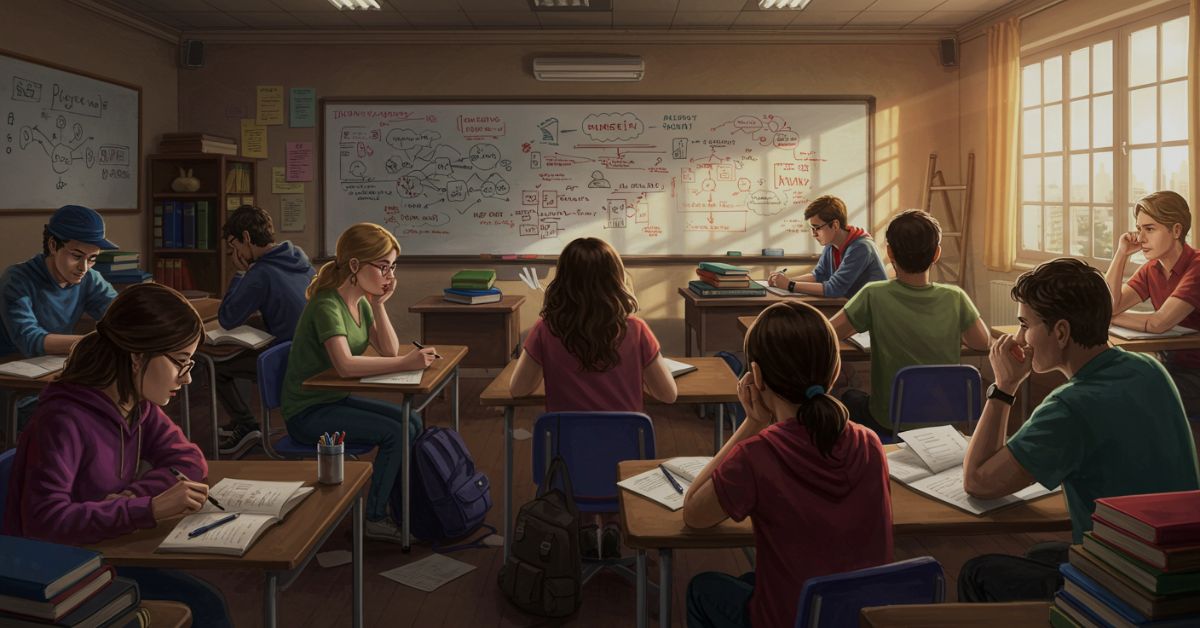Contents
- 1 Introduction to Differentiated Instruction and Literacy Stations
- 2 The Impact of Engaging Literacy Stations on Student Achievement
- 3 The Benefits of Engaging Literacy Stations in the Classroom
- 4 Strategies for Creating Effective Literacy Stations
- 5 Examples of Differentiated Literacy Station Activities
- 6 How to Assess Student Learning in Literacy Stations
- 7 Overcoming Challenges with Implementing Literacy Stations
- 8 Conclusion:
Introduction to Differentiated Instruction and Literacy Stations
Differentiated instruction has become a cornerstone in modern classrooms, recognizing that every student learns differently. The traditional “one-size-fits-all” approach simply doesn’t cut it anymore. Instead, educators are turning to innovative strategies that cater to diverse learning styles and paces.
One effective method gaining traction is the use of literacy stations. These dynamic spaces allow students to engage with reading and writing in interactive ways, making learning both enjoyable and impactful. Imagine a classroom buzzing with excitement as students rotate between creative tasks designed just for them, reinforcing their skills while fostering a love for literacy.
By enhancing differentiated instruction through engaging literacy stations, teachers can create an environment where all learners thrive. Let’s dive into how these vibrant hubs of activity can transform your classroom experience!
The Impact of Engaging Literacy Stations on Student Achievement
Engaging literacy stations play a crucial role in boosting student achievement. When students interact with materials that resonate with their interests, they become more invested in their learning. This engagement fosters deeper comprehension and retention of information.
Active participation encourages collaboration among peers. As students discuss ideas and share insights, they develop critical thinking skills essential for academic success.
Literacy stations also allow for personalized learning experiences. Each student can approach tasks at their own pace, catering to diverse abilities within the classroom.
Moreover, these dynamic environments promote independence. Students learn to manage their time effectively while exploring various texts and activities.
Teachers often observe significant improvements in vocabulary acquisition and reading fluency as a result of well-designed literacy stations. The vibrant atmosphere cultivates curiosity, making learning an enjoyable journey rather than just a task to complete.
The Benefits of Engaging Literacy Stations in the Classroom
Engaging literacy stations offer a dynamic environment for learners. They cater to diverse learning styles, providing opportunities for auditory, visual, and kinesthetic activities. This variety keeps students motivated and eager to participate.
Students gain independence as they navigate through different tasks at their own pace. This autonomy fosters confidence in their abilities and encourages a love for reading and writing.
Additionally, literacy stations promote collaboration among peers. When working together on projects or discussing texts, students develop essential social skills while deepening their understanding of the material.
Teachers benefit too! With small groups engaged in focused activities, instructors can provide targeted support where it’s needed most. This allows for more personalized instruction that addresses individual student needs directly.
These stations create a vibrant classroom atmosphere that celebrates literacy. The engaging setup invites curiosity and exploration—two critical components of lifelong learning.
Strategies for Creating Effective Literacy Stations
Creating effective literacy stations is all about variety and engagement. Start by selecting diverse materials that cater to different learning styles. Incorporate books, audiobooks, and digital resources to keep students motivated.
Design activities with clear objectives. Each station should focus on a specific skill, whether it’s phonics, comprehension, or vocabulary building. This clarity helps students understand what they need to accomplish.
Utilize flexible grouping strategies. Mix students based on their abilities or interests for certain tasks while allowing them to work independently at other times. This promotes collaboration and peer learning.
Incorporating technology can also elevate your stations. Use apps or websites that reinforce reading skills in an interactive way.
Make the environment inviting. Bright colors and comfortable seating can create a welcoming atmosphere where students feel encouraged to explore literature freely.
Examples of Differentiated Literacy Station Activities
One effective literacy station activity is the “Word Wizard” game. In this setup, students use vocabulary cards to create sentences or stories. This fosters creativity and enhances word comprehension.
Another engaging option is a “Reading Relay.” Groups rotate through various texts, summarizing each one before passing it on. This encourages collaboration and improves retention.
For auditory learners, consider implementing a “Storytelling Station.” Here, students can record themselves reading aloud or retelling stories with props. It builds fluency and confidence in public speaking.
A “Grammar Garage” station allows students to fix sentence fragments or run-on sentences using manipulatives like colored cards. This hands-on approach makes grammar fun and interactive.
Themed book nooks cater to different interests—mystery, adventure, or fantasy options keep even the most reluctant readers engaged while promoting choice in their learning process.
How to Assess Student Learning in Literacy Stations
Assessing student learning in literacy stations requires creativity and flexibility. Traditional tests may not capture the full picture of a student’s understanding.
Consider using observation checklists. As students engage with different activities, note their skills and strategies. This real-time assessment offers insights into their grasp of concepts.
Portfolios can also be effective. Students compile samples of their work over time, showcasing growth and areas needing support. It’s a tangible way to reflect on progress.
Incorporating peer assessments adds another layer. Encourage students to give constructive feedback to each other. This fosters collaboration and critical thinking.
Informal discussions help gauge comprehension too. Engage students in conversations about what they’ve learned during station time. Their explanations can reveal much about their understanding without the pressure of formal testing.
Overcoming Challenges with Implementing Literacy Stations
Implementing literacy stations can come with its fair share of challenges. One common hurdle is classroom management. Students may become overly excited and lose focus on tasks. Establishing clear expectations and routines helps maintain order.
Another challenge is resource availability. Teachers often need materials that cater to various learning styles. Creativity is key—consider using everyday items or digital resources to engage students without straining your budget.
Time constraints also pose a difficulty, especially for teachers juggling multiple subjects. Planning ahead can alleviate this stress. Designating specific time slots for each station ensures students receive equal attention while maximizing their learning experience.
Some educators worry about meeting diverse student needs effectively within these stations. Ongoing assessment and flexible grouping allow you to adapt activities as necessary, ensuring every child has the opportunity to thrive in their unique way.
Conclusion:
Creating engaging literacy stations is a powerful way to enhance differentiated instruction. By tailoring activities to meet diverse learning needs, educators can create an inclusive environment that fosters growth and achievement.
The impact of these stations extends beyond mere engagement. When students actively participate in their learning, they take ownership of their education. This leads to greater motivation and improved outcomes across the board.
Teachers play a crucial role in designing effective literacy stations. By integrating various strategies—such as using technology, incorporating student interests, or offering flexible grouping—they can ensure all learners find something valuable at each station.
Real-world examples make this strategy even more accessible. From interactive reading comprehension games to collaborative writing projects, there are countless ways to spark interest and promote skill development.
Assessment doesn’t have to be daunting either. Through observations, checklists, or simple reflections from students themselves, teachers can gain insights into individual progress while keeping the focus on learning rather than testing stress.
Challenges will arise during implementation—the key is persistence and adaptability. With careful planning and continuous feedback from students, any obstacles can become stepping stones towards creating an enriching classroom experience.
Embracing these principles allows educators not just to teach but also inspire young minds through dynamic literacy experiences that cater to every learner’s unique journey.
Ethan Cole is a versatile writer at hsnime.co.uk, offering fresh perspectives and engaging content across various topics. With a passion for creativity and knowledge, Ethan aims to provide insightful articles that resonate with a diverse audience.






